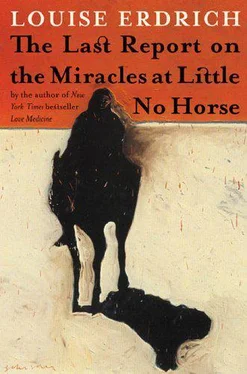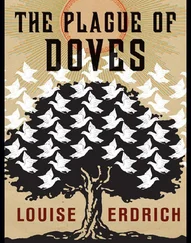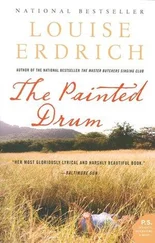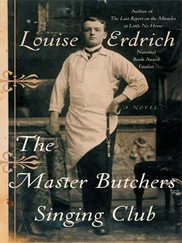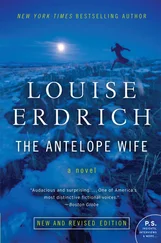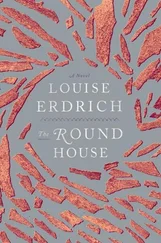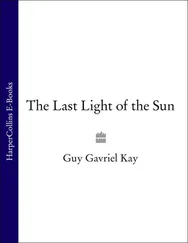It was a sound never heard before; no buffalo had ever made this sound. No one knew what the sound meant, except that one old toughened hunter sucked his breath in when he heard it, and as the sound increased he attempted not to cry out. Tears ran over his cheeks and down his throat, anyway, wetting his shoulders, for the sound gathered power until everyone was lost in the immensity. That sound was heard once and never to be heard again, that sound made the body ache, the mind pinch shut. An unmistakable and violent grief, it was as though the earth itself was sobbing. One cow, then a bull, charged the carcasses. Then there was another sight to add to the sound never heard before. Situated on a slight rise, the camp of hunters watched in mystery as the entire herd, which still numbered thousands, began to move. Slightly at first, then more violently, the buffalo proceeded to trample, gore, even bite their dead, to crush their brothers’ bones into the ground with their stone hooves, to toss into the air chunks of murdered flesh, and even, soon, to run down their own calves. The whole time they uttered a sound so terrible that the people were struck to the core and could never speak of what they saw for a long time afterward.
“The buffalo were taking leave of the earth and all they loved,” said the old chiefs and hunters after years had passed and they could tell what split their hearts. “The buffalo went crazy with grief to see the end of things. Like us, they saw the end of things and like many of us, many today, they did not care to live.”
* * *
Father Damien sighed and for a while the two priests were lost in a meditative silence, then he spoke softly to Father Jude. “What does that tell you about Pauline? About her mother? About the great pain of the end of things that lives in every family, here on the reservation, in some form or another? What does that tell you about our so-called saint? Pauline was, of course, the warped result of all that twisted her mother. She was what came next, beyond the end of things. She was the residue of what occurred when some of our grief-mad people trampled their children. Yes, Leopolda was the hope and she was the poison. And the history of the Puyats is the history of the end of things. It is bound up in despair and the red beasts’ lust for self-slaughter, an act the chimookomanag call suicide, which our people rarely practiced until now.”
PART THREE: MEMORY AND SUSPICION
1919–1920
Late that summer the body of a man was found in the woods. Father Damien was sent for. Already, it was known that the dead man was the vanished Napoleon Morrissey. With that identity in mind and knowing the length of time he had been missing, Agnes was at least in some measure prepared. She had by then seen life from start to finish and was familiar with death’s peculiarities.
Father Damien arrived in the hot, green, earth-smelling woods and approached the circle of men, who parted for him, hands or sleeves held to their faces. There, in a child’s play spot, surrounded by tufts of goldenrod and beds of blue asters, the body sprawled. Someone had laid a potato sack over it for modesty, but the poor nakedness was really the least obscene thing about the tableau. A gaping mouth, inhabited by tiny, busy creatures, crow-plucked eyes, hands clutched up about the neck. Father Damien excused himself and threw up, casually and efficiently, behind a tree, then returned with a handkerchief held to his lips. The men waited for him, accustomed by now to the priest’s combination of delicacy and shrewd toughness.
Steadier, he bent to the piteous human scraps, brushed a scraping of dirt from the throat, stared at the sight until it lost some of its horror and became a puzzle. Questions occurred, a great many questions. Of course, to begin with, the cause of death. Damien observed the stretched, fixed features, still apparent even after the summer’s heat — an effort to speak or, more likely, to gasp, to take air? And the hands to the throat. The man had surely choked, or been choked. If the latter, not by someone in a face-to-face death struggle, hands on windpipe, but something else.
“Was there a rope,” Damien asked of the men surrounding the body. “Did you find anything, a noose, twine, leathers, something that might have been used to strangle this man?”
There was no answer. As though thinking as one, they abruptly left the priest and fanned evenly through the woods. The undergrowth was thick and tangled with wild grape and raspberry, springy brambles, a summer’s growth of oak seedlings. The men stamped out a carefully widening circle. As they searched, Damien continued to take a meticulous inventory of the features of the body that might provide further information. The eyes — wide open — before they had been plucked? The feet, close together, had the body been dragged? The ankles bound? Alcohol. Any way of telling whether Napoleon was drunk at the time? Had there been a struggle? Was this a fight typical of drunks, and if so, with whom did he drink? Was there anyone missing from the reservation, a companion who’d perhaps run off in horror of what had happened?
“Neshke,” said George Aisance. In his hand a long rope of beads, a twine of knots and black prayer markers, a rosary.
Damien accepted the beads and tried to coil them around his fist. That was when he realized that this particular rosary was different from all others — it was strung on something stiffer, which kept an elegant shape. It was wire, some sort of wire, and then the barbs pricked his palm and he realized what kind. The crucifix of the rosary went cold in his hands.
He wasn’t of a sufficiently certain mind to say anything yet, but there were marks, yes, there were, a necklace of deep pits decayed in small dents around the dead man’s neck. After he bid George and the other men to leave, to find a sledge to transport the body back to town, he measured the rosary beads in his hands. Gently, as though he was fitting to a woman’s throat a string of pearls, he compared a decade, ten beads and a larger bead, barbs between, a set of mysteries that exactly fit the wounds.
That night, in the trembling radiance of candles, Agnes laid the rosary out before her on the covers of the bed and then sat next to it, looking at it, imagining just how it had been shaped. A pair of pliers, certainly, to untwist the wire. The beads were about a half inch in diameter as on a rope rosary, and they had accommodated — either naturally or by being enlarged — the wire and the barbs between. For the rosary had been cleverly planned to utilize the spun steel thorns, perhaps to prick a finger between each decade or perhaps… Here Agnes picked up the rosary dangling stiff by the crucifix, swept it over her shoulder so it caught in the flap of the overcoat that she still wore. She frowned at herself and disentangled it — a flagellant’s whip. It would have left, she thought, gingerly gripping it now, the hands of whomever used it to choke a grown man a bloody mess.
THE TEMPLE WHIPPING
Napoleon’s funeral set things going, created divisions that would last for years, during which a complex transfer of power would occur on the reservation. Land would pass from the hands of Napoleon’s sister, Bernadette, to the son of Margaret Kashpaw and from there into Kashpaw hands. That’s where it started — in the church before a crude pine box. Of course, Father Damien knew by now that the Kashpaws and Pillagers avoided the Morrissey and Lazarre camp. It had been his fruitless work to try to bring together the factions. What happened at the funeral made him give up the notion, forever, and accept that he dealt with a set of clan differences, complicated by loss, land, and money, that would never heal. These differences would go on, in fact, through time and come to define the politics of the place he loved.
Читать дальше
